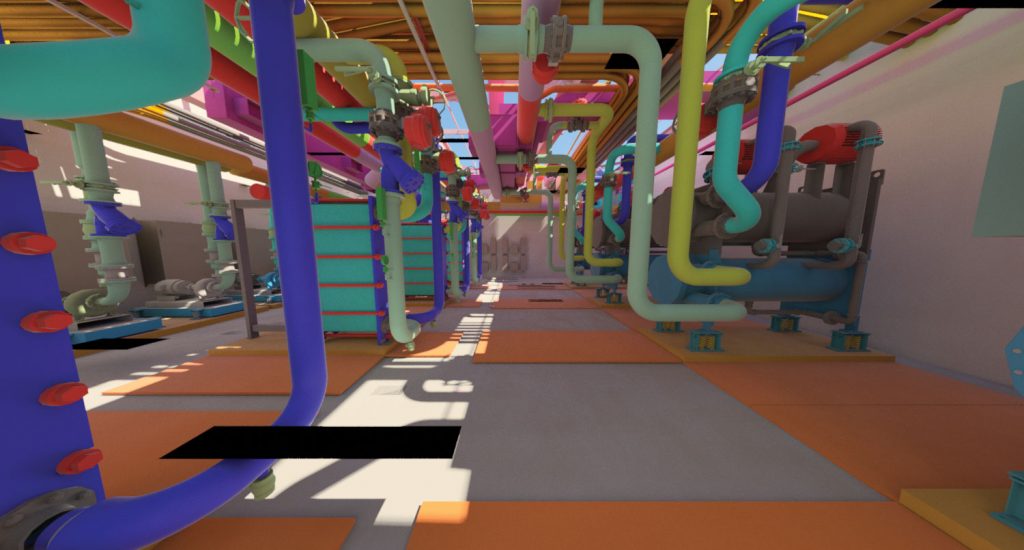Speed, Communication and Consistency: 3D Modeling in the Cloud
By now, nearly everyone in the world of design and construction is using some form of building information modeling, from architects and engineers to general contractors and their subs. But because each of these players has different programs, different tools and different capabilities, working a project through the BIM process can sometimes get clunky. “Things can get bottlenecked,” says Ali Militano, virtual modeling coordinator for Structure Tone. “Typically, everyone is waiting for the BIM coordinator to create an aggregated model, share it back with the team and issue class reports, then wait again for everyone to make their revisions. Then we create a new merged model, and the cycle continues. This really slows the collaboration process.”

But with ever-evolving BIM technologies like AutoDesk’s BIM 360 Glue, the project team can alleviate that bottleneck by having the latest model—and its previous iterations—“living” in the cloud with shared access across the team.
MODEL MASTERS
Tools like BIM 360 Glue essentially handle the update and consolidation process for the team. Every time a project team member “Glues” a revised model, the system automatically makes the change to the master model. While the modeling itself is still left to each party and their modeling software of choice (AutoCAD, Revit, etc.), they can easily upload their model directly to Glue, which converts the changes into the master, ensuring everyone has ready access to the most up-to-date version in one shared platform.
Available on desktops and tablet devices, team members who aren’t involved in the modeling itself can also view the model to help solve issues. For field staff, that kind of immediate access has been invaluable.
“I have it right on my tablet so I can take a look at the model whenever a question comes up,” says Kiera Brady, a Structure Tone superintendent currently working on the new Hudson Yards headquarters of Time Warner, now part of AT&T and renamed Warner Media. “I’ll get a call from a sub to come show him the model so we can take measurements or manipulate the view to help solve whatever issue he’s having. It’s incredible how many subs find me to reference the model.”
DREAM TEAM
This kind of collaboration also helps build a stronger, more unified team. By working on the BIM process together from the time the entire team comes on board throughout completion, everyone remains on the same page and understands where things are going.
“For some jobs, the BIM process starts in the early phases and then is kind of thrown by the wayside as things get going,” says Douglas Kruser, Structure Tone project manager for the Warner Media project. “With this process, we have to put in a lot of time upfront together, but it really alleviates headaches and potential delays down the road.”
For a job like Warner Media’s 1.5Msf offices, making sure all the people and parts are organized can be a major challenge. BIM 360 Glue has helped with that too. “Projects at Hudson Yards are so large and complex with many phases, and each phase with different subcontractors,” says Militano. “In Glue we can see all the users, manage access and create folders by each floor or phase, etc., with everything centralized in one place. For projects of this size, that’s incredibly helpful.”
Clients love that organization and efficiency as well. Warner Media project staff can view the model themselves to see where things stand, and the team can walk through the model together, remotely or in person, if they need to quickly describe a proposed change and its effects.
“Rather than trying to describe a change, we can show them visually in the model how it may—or may not—affect the space,’’ says Militano. “They really see that the impacts are not as bad as they may have thought, or that they make the most sense to the overall picture. That kind of communication has made our relationship with the client even that much better.”

